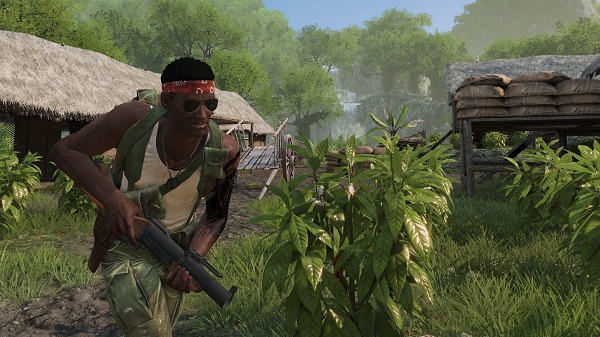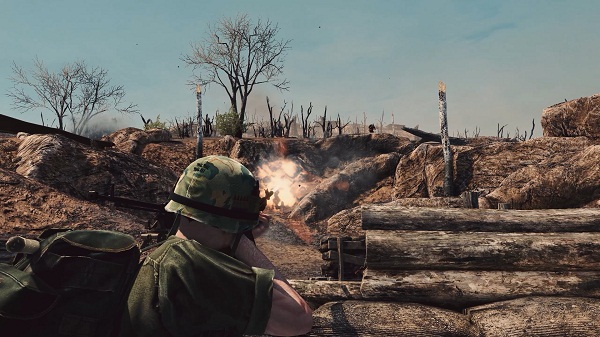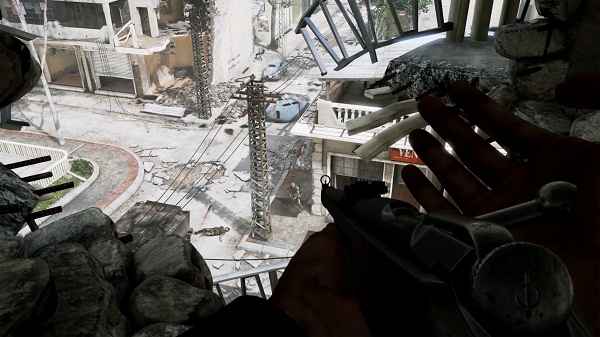RISING STORM 2-VIETNAM REVIEW
Early to say that World War II returns to the gaming scene, it is not early to conclude that one battlefield has never been too popular in the FPS genre, especially for multiplayer frustrations.This is, of course, Vietnam. For reasons why this war theater has never been too interested in development studies, we will not talk because this is another topic, but leave your opinion in comment.Luckily for us, Antimatter and Tripwire have recognized that this battlefield is the best step forward for the Red Orchestra series by modern shooting.Just as the first Rising Storm presented the Pacific World War II theater, its continuation by keeping everything Red Orchestra is leading us into another asymmetrical tug between the US Army and Navy and Viet Cong and NVA. It should be emphasized immediately that the developers have successfully transmitted the atmosphere of the battles that took place in the Asian state, but all those who expect something similar to films and themes could slightly lower expectations. Namely, Rising Storm 2: Vietna hams a somewhat milder glimpse of the horrors of war than its predecessors, but it still shows how much the traumatic lives of soldiers in the battlefield can be.
"This may sound like an exaggeration, but the developers have doubled the appearance of the chaotic tide atmosphere."
The score moves around the player and the sound of the environment is dimmed, and the field of vision diminishes. The swindle is then the only friend with a bit of faith that one of the supporters will succeed in eliminating the opponent and enabling further warfare without going to the point of a new life. There is already the first distinction between this and the previous two titles - there is no longer any mechanics of going to shelter and the possibility of wrestling over objects, but it is now a classic run and bend.
"For the sake of the previous games, there is no longer any mechanics of automated sheltering."
At first it may be a little weird if you come from the previous titles, but you can quickly get used to the "new" system. Moreover, as in Vietnam the helicopters played a significant role in the transport of soldiers, the maps are now larger than usual, so the soldiers are on the palate because they have much more power to run. This is the second difference that can be felt in the gameplay itself, and although players move faster, crossing across the various obstacles is now somewhat slower that initially can often lead two meters under the ground. At least until you get used to how soldiers need time to jump out the window or when they climb out of the cave.
On the other hand, the feeling of tapping has remained at a very high level. The class system we have seen earlier is also present here as one of the new roles of the masculine. Along with the previously mentioned bigger terrain, the vertebate is actually a mobile radio for the commander when calling for rain drops. The other classes are quite standard and therefore independent of the other, both have access to automatic weapons, which greatly changes gameplay unlike predecessors. Here, you can definitely go to the developmental study for a sense of shooting because every weapon is quite different and requires a different approach to the opponent depending on the terrain.
"Each weapon is sufficiently different and requires a different approach to the opponent depending on the terrain."
Although this may sound like a promotion of virtual violence, but the feeling when it comes to making a clean shot in the head is so good that it simply makes it easier to play. Even when gunfire hits later and hits at 70m and more are normal, then the game virtually even more rewards the player's skills because it can create a complete picture of how well the shooting is done. Just as the balance between the sides is just as good.
Americans may have a bit more precise weaponry, though it all depends on the player's own preferences, plus a grenade launcher and a flamethrower, but the most distinguished is the technology to support the soldiers on the ground. This is manifested through a variety of commanding officers who, besides artillery, have napalm, Spooky and aircraft to destroy enemy forces on the ground and can practically recreate the scene from the movie "We were soldiers" where Mel Gibson is Broken Arrow.
Viet Conga and NVA commanders have slightly different options, so they can call anti-aircraft support with the artillery attack and shorten the time needed to re-enter the battle. Their soldiers also have the opportunity to use the environment in special places, so they can climb the ridge on the roofs or through the vineyards over the walls.
"In addition, the leader of a group of soldiers has the option of digging a tunnel that serves as a spawn point, while Americans have the old principle of revival on their leader group."
Gameplay for both sides allows unique strategies because one must protect their leader, and others must smartly hide the exit from the tunnel.
For further refreshing the series, there is also a new Supremacy model where three types of helicopters are presented to the Americans, while the opposite side for the faster crossing of the battlefield has tunnels. But what is particularly interesting in this fashion is a scoring system where both sides must connect points by folders, but the points go only if all the points won are linked to the start. Managing this approach is a call for guerrilla warfare where the Vietnamese can take advantage of, on the other hand, lacking quality pilots.






Well, looks legit. Would've liked less bold words on the intro, but otherwise it's good.
This game is one of the best realistic war sims out there
Oh wow... Sounds interesting... This would be my first time here
i would actually love to play this game, does amazon sell this?

